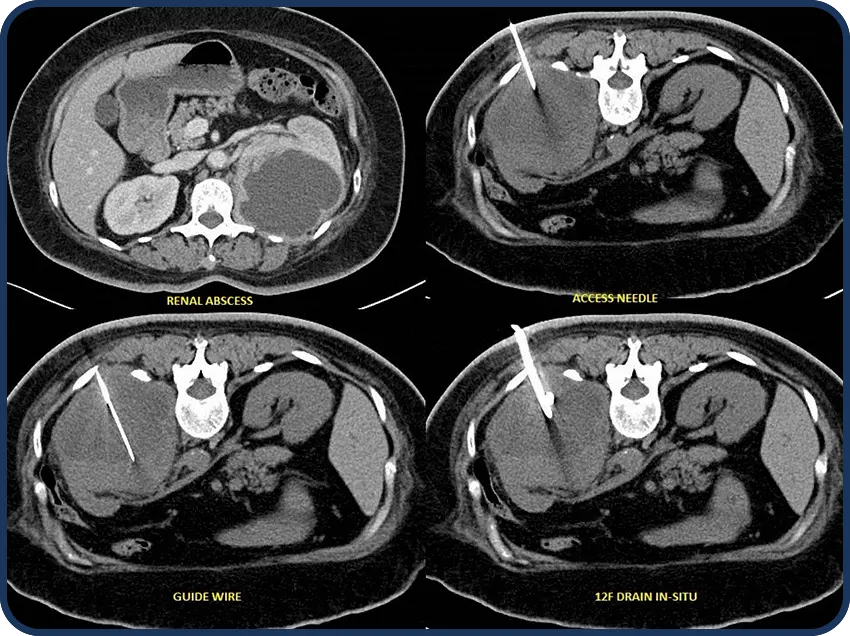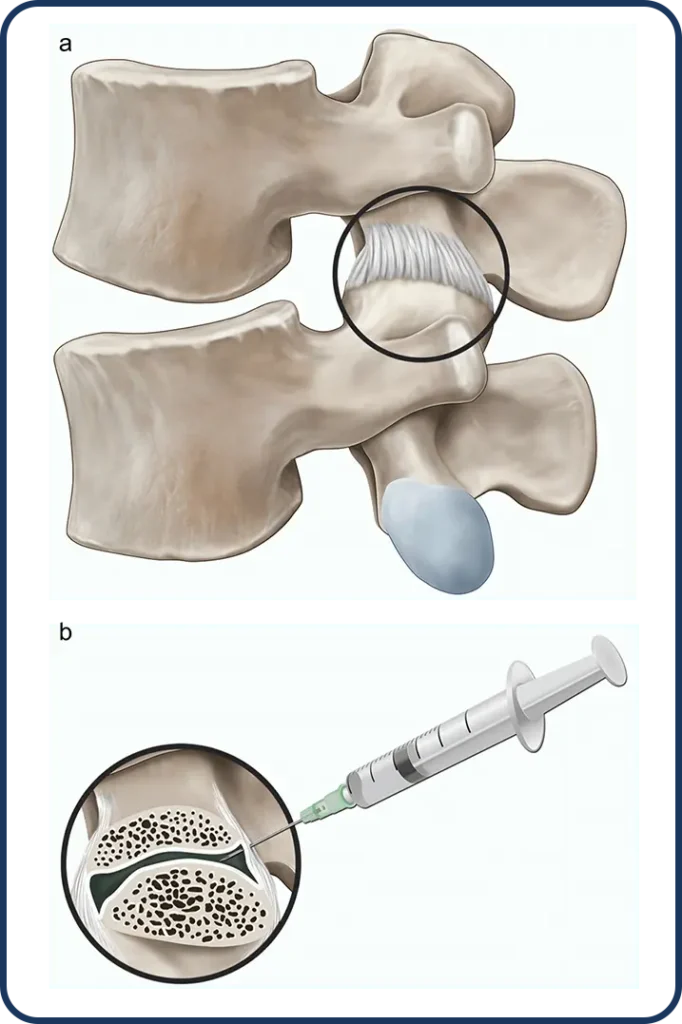Other Procedures
Discover exceptional care for women’s health concerns at PIIT, with a focus on innovation and advanced technology, we offer modern treatment options to address various women’s health issues. From Uterine Fibroid Embolization to Varicose Vein treatment, our expert interventional radiologists deliver compassionate care with precision and expertise. Explore our range of cutting-edge solutions and take control of your health journey with us!
Abscess Drainage
What is an Abscess Drainage?
Abscess drainage is the treatment typically used to clear abscesses and start the healing process. Aspiration is the image-guided puncture of a cystic (cavity filled with liquid or gaseous material) lesions or solid lesion to remove a fluid or tissue sample with a suction needle.
Why is this procedure recommended?
This procedure is recommended in a variety of cases which includes:
- A complicated diverticular abscess (collection of pus in pouches formed in the lining of the intestine)
- Crohn disease-related abscess collection of pus in the abdomen and pelvic area.
- An appendicular abscess (collection of pus resulting from the inflamed appendix)
- Post-surgical fluid collection
- A hepatic abscess (pus-filled mass in the liver that can develop from the injury to the liver)
- A renal abscess (collection of infective fluid in the kidney)
- A splenic abscess (collection of pus in the spleen)
- A tubo-ovarian abscess (pocket of pus that forms because of an infection in a fallopian tube and ovary)

How is this procedure performed?
- The procedure begins with the doctor prepping the area where the abscess drainage will be done with iodine soap.
- Local anesthesia will be injected into the skin at the insertion site. You may feel some stinging at the site for a few seconds after the local Anesthetic is injected.
- After the area is numb, a contrast dye is injected.
- Under image guidance, a thin needle will be placed into the abscess to obtain a sample of the infected fluid from an area of the body.
- A small drainage catheter is left in place to drain the abscess fluid and a drainage bag is connected to the catheter.
- It may take several days for all the fluid to be removed.
What are the benefits VS risks?
We have listed down a few benefits and risks below for better understanding
Benefits
- It is a minimally invasive procedure.
- There is no incision.
- No surgical incision is necessary
- Relief of symptoms that are caused by the tumor
Risks
- Risk of infection
- Damage to an adjacent organ (rare)
- Bleeding
- Blocked or displaced the catheter
Joint Injection
What is a Joint Injection?
Steroid joint injections are used to treat swollen or painful joints. The most often injected joints are the shoulder, elbow, knee, hand, wrist, or hip.
A joint injection is not a cure for the cause of your pain, but it is used to reduce the intensity of your pain.
It is usually performed as:
- Diagnostic aid (test to determine the source of your pain).
- Therapeutic (to relieve you of your pain).
Why is his procedure recommended?
This procedure is recommended in the following conditions:
- Trigger finger (a condition that affects one or more of the hand’s fibrous tissues, making it difficult to bend the affected finger or thumb)
- Carpal tunnel syndrome (a condition that causes pain, numbness, tingling, and weakness in the hand and wrist due to pressure on the nerve)
- De Quervain’s tenosynovitis (painful inflammation of fibrous tissues in your wrist and lower thumb)
- Joint arthritis (swelling and tenderness of one or more of your joints)
- Chronic spinal pain/facet joint pain (an arthritis- like condition that affects the spine and may cause severe back and neck discomfort)
- Sacroiliac joint arthritis (inflammation of the joint between the spine and hip, caused by Sacroiliac joint dysfunction)
- Osteoarthritis (protective cartilage that cushions the ends of the bones wears down over time)
- Rheumatoid arthritis (a condition that can cause pain, swelling, and stiffness in joints. It occurs when the immune system does not work correctly)

How is this procedure performed?
- The procedure begins with the doctor prepping the area where the injection will be given with iodine soap.
- A local anesthetic is used to numb the skin at the treatment area, so discomfort is minimal throughout the procedure.
- Fluoroscopic (special X-ray) guidance helps the doctor insert a hollow needle into the painful area.
- Contrast dye may be injected to confirm the correct needle location. When the needle is correctly positioned, the anesthetic and corticosteroid medications are injected into the joint capsule.
- When the procedure is completed, the needle is then removed.
What are the benefits VS risks?
We have listed down a few benefits and risks below for better understanding
Benefits
Minimally invasive procedure
Reduce blood flowing through the body to relieve pain
Risks
- Infection
- Allergic reaction to medication injected
- Local bleeding
- Flushing of the skin
Microwave Ablation for Liver Tumors
What is Ablation?
Ablation is a procedure that with extreme precision destroys the diseased area of your liver. It uses the energy from electromagnetic waves to heat and destroy the tumor.
Why is his procedure recommended?
You would be getting this procedure done if you have
- Cancer arising from liver or
- Cancers that have spread to liver from other areas/ organs. (Secondary liver cancer)
How is this procedure performed?
- You will be taken into the procedure room and the anesthetist will then give you general anesthesia.
- Your doctor will prepare the area where the needle is to be inserted with iodine soap and cover it with sterile drape (sheet).
- An ablation needle is placed into the liver tumor through the skin using image guidance (ultrasound or CT scan).
- The ablation needle produces heat which travels a few centimeters, and destroys the tumor and approximately 1-centimeter margin of liver surrounding the tumor.
- At the end of the procedure, the needle will be removed and pressure will be applied to stop any bleeding.
What are the benefits VS risks?
We have listed down a few benefits and risks below for better understanding
Benefits
Minimally invasive procedure.
Can treat liver tumors without the need for a major surgery.
Effective treatment for patients whose disease is unsuitable for surgical resection.
The procedure can be repeated.
Risks
- Bleeding from the incision site
- Infection
- Burns
- Collapsed lung (rare)
- Damage to organs close to the area being treated (rare)

